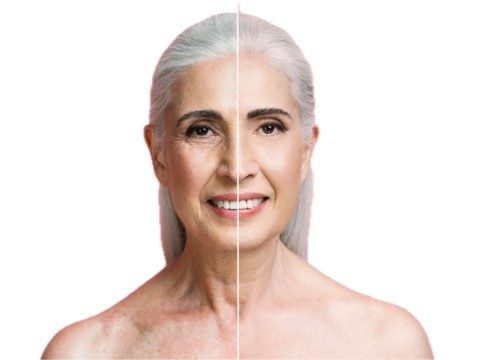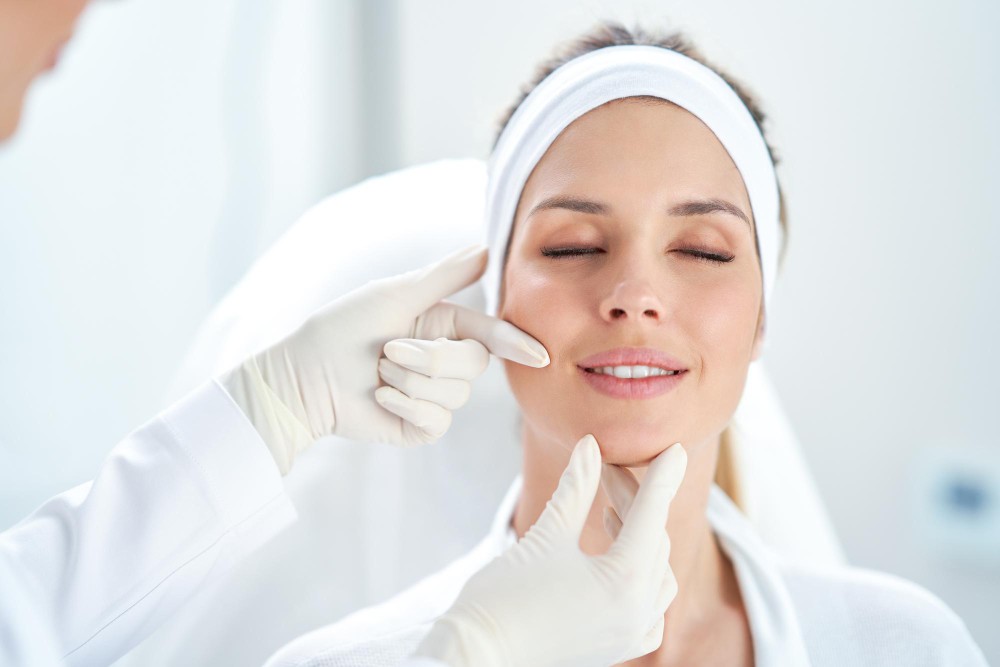Quote of Op.Dr. Arif Eroğlu
Fractional Carbon Dioxide (Co2) Laser Treatment
Radiofrequency Fractional CO2 Laser applies the advanced method of skin rejuvenation by combining two high-performance technologies: fractional CO2 laser and radiofrequency energy. Applications are very widespread and include treatments of various skin disorders. Acne scars, wrinkles, pigmentation, and sagging skin are usually treated by stimulating collagen production. This is a non-invasive procedure targeting the superficial skin layer and deeper tissue for long-lasting tightening and skin revitalization without surgical intervention.
The following guide will take a closer look at the main elements surrounding one of today's most popular skin treatments.
What is Radiofrequency Fractional CO2 Laser?
Radiofrequency Fractional CO2 Laser is a combined modality that applies the two different techniques, fractional CO2 laser, and radiofrequency. The fractional CO2 laser causes minute injuries to the surface of the skin, wherein the natural cycle of wound healing and body repair is stimulated. On the other hand, the radiofrequency energy passes through deeper layers of skin to stimulate the production of collagen. These combine to give overall smoothening and firmness to the texture of the skin.
For What Skin Problems is it Indicated?
The treatment is quite versatile and very effective in treating such a wide range of skin conditions, including:
Wrinkles and fine lines-smoothen out wrinkles, thereby diminishing the appearance of signs of aging.
Acne scars-it resurfaces the skin, hence improving texture in scarred conditions.
Pigmentation problems-reduces sun spots, age spots, and hyperpigmentation.
Saggy skin-all areas with loss of elasticity get tightened and lifted up.
Large-sized pores-pores shrink in size as skin texture gets refined.
How Does the Treatment Work?
Anaesthetic cream applied to the targeted area reduces any discomfort. The laser causes small, controlled injuries to the skin, while the radiofrequency waves heat the deeper layers. This double action boosts the production of collagen, which, therefore, tightens the skin and makes it smoother. This usually lasts from 30 minutes to 1 hour, which may extend with the increase in the area to be treated.
Benefits of Radiofrequency Fractional CO2 Laser
Minimal Downtime: It is a non-invasive treatment hence requires short recovery time, and the patients can return to their routine work pretty soon.
Long-Lasting Results: The end results of the therapy remain there for several months and sometimes years because its process of collagen production is continuous.
Versatility: This technology can address nearly any part of the body, such as the face, neck, and chest areas.
No surgery involved: The treatment has visible and effective improvements without necessarily resorting to invasive surgical procedures.
How Many Sessions Does One Need?
In most patients, visible improvements can be observed within one session. However, depending on skin condition and results desired, multiple sessions (2-3 normally) may be advised for better results. Your dermatologist will tailor a treatment that suits your skin and condition.
After Treatment
Some redness, swelling, and sensitivity are normal post-procedure and can last for a couple of days. Also, post-treatment instructions such as avoiding direct sun exposure, using gentle skin care products, and applying sunscreen religiously protect the healing skin. Proper aftercare can help improve the results and also minimize the possible side effects.
Side Effects and Risks
These treatments generally do not have any major side effects; however, minor risks include:
Inflammation and redness: These side effects usually go away after a week.
Pigment changes: Hyperpigmentation and hypopigmentation are rare possibilities, but a chance in darker-skinned individuals does exist.
Infection: Rarely, infection might occur if there is improper aftercare.
Radiofrequency Fractional CO2 Laser treatment is a strong and non-invasive procedure that rejuvenates one's skin, helping with anything from wrinkles to scars and pigmentation. The treatment offers minimal downtime, long-lasting results, and is highly customizable. It is ideal for those seeking younger, fresher skin but who do not want surgical procedures. It is necessary to consult whether the procedure will be suitable for you with a qualified dermatologist before the treatment.
- Abdominal liposuction
- Arm Lift (Brachioplasty)
- Back Liposuction
- Blepharoplasty (Eyelid Surgery)
- Brazilian Butt Lift (BBL)
- Breast Augmentation
- Breast Augmentation with Tear Drop Implants
- Breast Correction
- Breast Implant Removal
- Breast Implants With Breast Lift
- Breast Lift
- Breast Reconstruction
- Breast Reduction
- Brow Lift
- Buccal Fat Extraction
- Butt Implants
- Buttock lift
- Buttock Reduction
- Cheekbone Reduction
- Chin Implant
- Health Insurance
-
Accommodation
- Online Healthy Life Assistant 9/5
- Post - Experience Follow Up 6 Month
-
Extra Privileges

- Health Insurance
-
Accommodation
- Online Healthy Life Assistant 24/7
- Post - Experience Follow Up 1 Year
- Pre-Treatment Doctor Consultation
-
Extra Privileges

 Private
Private
- Health Insurance
-
Accommodation
- Healthy Life Butler
- Post - Experience Follow Up 2 Year
- World-Famous Doctor Consultation
-
Extra Privileges

* Price varies depending on extra and upgrade selections.
Unlike a traditional surgical facelift, which involves incisions and the repositioning of facial tissues, a non-surgical facelift relies on non-invasive methods such as dermal fillers, laser treatments, and radiofrequency to enhance skin elasticity and reduce the appearance of wrinkles.
Common non-surgical facelift procedures include dermal filler injections, Botox injections, thread lifts, laser skin resurfacing, ultrasound therapy (Ultherapy), and radiofrequency treatments. Thread lifts are particularly popular for their ability to provide a subtle lift and rejuvenation without surgery.
Yes, non-surgical facelifts can be effective in reducing signs of aging such as wrinkles, fine lines, and sagging skin. The results vary depending on the specific procedure and individual factors.
Potential risks and side effects may include temporary swelling, redness, bruising, or discomfort at the treatment site. Serious complications are rare.
The duration of results varies among procedures, but generally, non-surgical facelift effects can last from several months to a couple of years. Maintenance treatments may be required to sustain the results.





